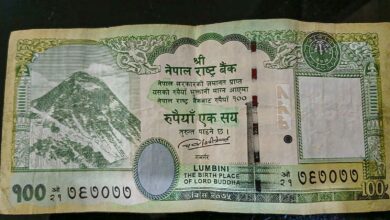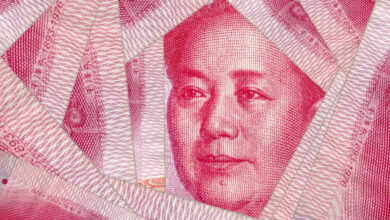analysis of the world’s strongest currency

The beleaguered regime of Armenian Prime Minister Nikol Pashinyan has been marked with death and loss. The disasters endured by the Armenian nation during his rule have led to calamities only surpassed by the Armenian Genocide. But one positive outcome has been the unexpected and unprecedented rise in the Armenian dram. During Pashinyan’s time in power, the dram has become the world’s strongest currency. Pashinyan, a college dropout with no experience in finance or economics, has shepherded the dram to this lofty status. The dram reached its peak on September 19, 2023, the start of the depopulation of Artsakh of Armenians.
There are several metrics to determine the value of a nation’s currency. Factors include: supply and demand, central bank interest rates, gross domestic product (GDP), government debt as a percentage of GDP, inflation and real interest rates. A nation’s currency is more valuable when demand exceeds supply, central bank interest rates are high, GDP is high (both nominal and per capita), government debt and inflation are low and real interest rates are positive.
If you look at where Armenia stands in her region, let alone in the world, it’s hard to comprehend how investors would value the dram so highly. Let’s compare the economic indicators for Armenia with the same indicators for Russia, Iran, Georgia, Turkey and Azerbaijan. The dram is the least in demand compared with the currencies of Armenia’s neighbors. The central bank interest rate is similar to those of Georgia and Azerbaijan, but is far below those of Russia, Iran or Turkey. Armenia’s GDP is the lowest in the region, but per capita, it is higher than Georgia and Iran’s, slightly above Azerbaijan’s and below Turkey and Russia’s. Armenia’s government debt as a portion of GDP is far higher than that of any of its neighbors. Georgia’s debt is about 25-percent lower than Armenia’s. The rest of its neighbors are less than half as indebted as Armenia.
Normally, this combination of economic indicators would produce high inflation. But with Armenia, which has deflation, the opposite is true. As of April 2024, Armenia’s inflation rate stands at -.7%. Georgia and Azerbaijan have very low inflation, Russia has moderate inflation, while Iran and Turkey have very high inflation, with Turkey having one of the highest inflation rates in the world.
Real interest rates are defined as the central bank interest rate minus the inflation rate. Armenia has positive real interest rates, the highest in the region. This is the result of the strong dram, and if the dram weakens, real interest rates will decrease.
Since Pashinyan took office in May 2018, the dram has appreciated 36.34-percent versus the Georgian lari, 37.11-percent versus the Iranian rial, 85.31-percent versus the Russian ruble, 25.38-percent versus the Azerbaijani manat and 986.53-percent versus the Turkish lira.

Armenia has been buoyed by two main forces during Pashinyan’s rule: the rise of the dram itself and the influx of foreign assets through relatively wealthy and highly skilled Russian professionals looking to avoid conscription into the Russian army. These factors stabilized Armenia after the disastrous results of the 2020 Artsakh War and the migration of refugees after Azerbaijan ethnically cleansed the region of Armenians. But how is it that the dram appreciated so powerfully in the period after the 2020 war?
The COVID-19 pandemic and the war later that year should have taken a significant toll on the dram. Since Armenia is a country largely absent of natural resources, it relies on tourism and remittances from workers abroad, amongst other revenue streams such as agriculture and manufacturing. The pandemic and subsequent lockdowns collapsed these sources of revenue. The war was brief and fought outside of Armenia’s internationally recognized territory, but the effects of the war should have produced inflation, which theoretically would have weakened the dram.
Instead, compared to the United States dollar, the dram was stable throughout 2020, fell slightly at the beginning of 2021 and skyrocketed with high appreciation in 2022. The dram, exchanged at 493.58 per dollar on March 20, 2020, was virtually unchanged on the date the war ended on November 9, 2020 at 493.74, reached a low of 529.49 on March 26, 2021 and has risen since that date. Since Pashinyan took office, the dram has appreciated 24.59-percent versus the U.S. dollar.
Armenia’s economy and GDP have grown significantly during Pashinyan’s rule. Armenia’s GDP increased from $12.46 billion in 2018 to $21.20 billion in 2023. Since this number is measured in dollars, a big portion of the gain has been the rise of the dram, with the rest due to the large increase in nominal debt assumed during Pashinyan’s rule.
Armenia’s debt to GDP has remained nearly unchanged in the last six years, but this hides the fact that government debt has exploded under Pashinyan. Armenia’s nominal debt rose 41.93-percent from the second quarter of 2018 through the fourth quarter of 2023. Because the dram appreciated so strongly, the effects on debt to GDP remain obscured. Armenia’s central bank printed dram, increasing its supply, and Pashinyan’s government spent these printed dram, in addition to all taxes and other government revenue. But this did not diminish the value of the dram or produce inflation, which would be expected in any country that pursues these economic policies. Instead, the opposite occurred, with the dram’s meteoric rise producing deflation in response to Pashinyan’s profligate spending.
Despite the calamitous territorial losses from the 2020 Artsakh War and the ever-present threats to the borders of Armenia proper from the Azerbaijani military, the foreign exchange market’s appetite for the dram has not yet waned. This is further supported by Fitch’s recent BB- rating of Armenia’s economy, despite those geopolitical losses and risks. If the geopolitical currents were to shift or economic conditions to significantly worsen, it could lead to big problems in the future. If Armenia’s government debt is denominated in foreign currencies and the dram falls, the cost of servicing these debts would soar, leading to economic hardship and severely limiting the options of any future Armenian government.
To illustrate what is possible, we can look at what has happened in Lebanon. The long-suffering Lebanese people had their own one-two punch in 2020, with the pandemic and the Beirut port explosion on August 4, 2020. The dram has appreciated 7,611.55-percent versus the Lebanese pound since Pashinyan took office. This loss of purchasing power for the Lebanese pound has led to massive economic and social problems for Lebanon and her people.
The same thing could happen to Armenia, and if it does, the subsequent reduction in the quality of life would lead to political trouble for Pashinyan. Let’s not forget that there was nearly a revolution in Armenia when PM Serzh Sargsyan raised the price of electricity, while in contrast, calls for Pashinyan’s resignation are only now being heard on the streets of Yerevan — and for how long? To date, the native Armenian population has prioritized economic gain, perhaps short-lived, over permanent territorial loss. Barring a seismic shift in the South Caucasus, such as an Azerbaijani invasion on the prized “Zangezur corridor,” the dram and Pashinyan will likely remain resilient. Identify the hand that is buying the dram in the foreign exchange market, and you will identify the hand that is sustaining Pashinyan.





